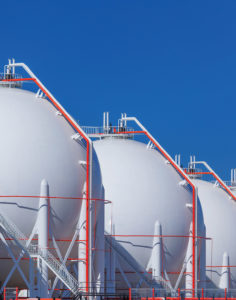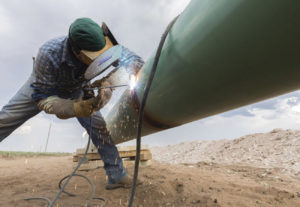Can natural gas prices rise even in a generational downturn like the COVID-19 situation? Analysts including the U.S. Energy Information Administration (EIA) feel that prices were already so low that they had nowhere to go but up anyway. In the Permian Basin in particular, gas prices were artificially low due to takeaway constraints. Such constraints could be relieved by decreases in production of associated gas, as sub-$30 oil slashes drilling overall.
After record natural gas production in 2018 and 2019 flooded the market, the EIA had already expected a production decline for 2020. Production was already outstripping demand worldwide, and prices had fallen to levels that made it unprofitable for producers in pure gas plays. It was only logical that capex would drop, which would at least slow the growth in production.
Then the world stopped, and demand crashed for every kind of fuel, from coal to oil to natural gas.
As for specific predictions, Ryan Purpura, chair of the national energy practice at law firm McGuireWoods, said, “Anyone who thinks they have a handle on anything” should think again.
There are, however, some principles to watch for, said Anna Mikulska, Ph.D. She is nonresident fellow, Energy Studies, at the James A. Baker III Institute for Public Policy at Rice University. At the Institute she focuses on natural gas markets worldwide. She pointed out that predicting the future was not in her job description either, but trends can be spotted.

A gas cylinder or tank is a pressure vessel for storage and containment of gases at above atmospheric pressure.
Mikulska said forecasting would be easier if it were certain that world economy would reopen fully by the end of 2020. “But it’s not, and we don’t know if it will end up opening successfully, and whether there’s going to be another wave (of COVID-19) coming in the fall. If so, then the recovery may be pushed away and there might be some more demand destruction.”
In the Permian Basin, natural gas prices were already depressed in 2018 and 2019 due to tight takeaway capacity—which, ironically, was set to be alleviated in 2020 anyway due to new gas pipelines coming online. Because Basin gas is almost always associated with oil production, and because crashing oil prices have caused producers to slash drilling budgets and shut in wells, the takeaway issue may be solved on the supply side, at least for the near future.
If so, that would at least eliminate the extra discount for Permian gas, bringing it more in line with U.S. prices as a whole. That would be progress for Permian producers.
Mikulska noted, “The smaller production in associated gas actually can [bring a] rise in Henry Hub prices, since the supply is going to be smaller.” She added that prices at that location rose about 5 percent in early May. This is to the point that Henry Hub prices moved higher than Platts JKM™ (Japan Korea Marker) and NBP (UK) and other markers, at least for a while.
Purpura, who lives in Pittsburgh, Penn., noted that producers in his region are glad to see Permian production drop enough to boost prices because those in the Marcellus “are trying to sell a product [Permian producers] are trying to give away.”
Prices meanwhile are depressed in Asia and Europe for the same reason oil prices are depressed worldwide—lack of space in storage. Gas prices are better in the United States, Mikulska said, because there is still significant storage space here.
Purpura’s organization sees more price recovery later in 2020. “If you’re looking at the Henry Hub and at natural gas pricing, we’re very bullish, particularly later this year and then early next year. It’s a combination of things. It’s production dropping off a cliff, most people think, by third quarter this year” in both the Marcellus and in associated Permian gas.
“So if there’s less supply,” he continued, “and [if] we rebound, if not slightly increase, by the end of this year,” most analysts see at least a small price increase by January or February 2021 to around $3/mcf. “Certainly better than $1.60 or $1.50.” That level was where it bottomed out earlier in 2020.
This down-the-road optimism has spawned a buying opportunity for producers with cash to spend and for private equity firms with “dry powder,” Purpura said. He cited several transactions his group is handling, including one in which a gas operator is actively acquiring assets and raising capital—without any problem attracting investors. “We’ve heard from a number of private equity investors, family offices, and independent sponsors who are in the hunt to pursue shale gas assets,” he noted. “It’s certain that a lot of opportunities are coming onto the market in coming months.”
The drop in production that’s fueling hope for higher prices was already underway before the Coronavirus lockdowns, Purpura observed. “That was really a function of gas prices being really low and a real lack of capital to drill new wells.
“The thing that’s different now, in comparison to 2014-2015—the last time we had a commodity price collapse—is that banks and other alternative capital providers stepped into the breach [then] and financed drilling through a lot of debt. I just don’t believe that’s going to be available this time.” As reasons, he listed ESG concerns, as well as a recent history of funds losing large sums of money in operator bankruptcies—both of these factors contributing to a loss of confidence in the sector.
He drew a distinction between good and bad investments in this time. “An existing company today, who is already laden with a fair amount of debt, I don’t know that they’re going to be able to negotiate a borrowing base increase with their RBL (reserve base lending) facility.” Lending as a whole has “ground to a halt” no matter its source.
 On the other hand, someone with good assets can at least sell those assets, though it might be for peanuts. “The old axiom is, ‘Rocks don’t go bankrupt,’” Purpura said. “Companies may go bankrupt, but if the rocks are good, the assets can be sold, though it might be for pennies on the dollar—the rocks are still good.”
On the other hand, someone with good assets can at least sell those assets, though it might be for peanuts. “The old axiom is, ‘Rocks don’t go bankrupt,’” Purpura said. “Companies may go bankrupt, but if the rocks are good, the assets can be sold, though it might be for pennies on the dollar—the rocks are still good.”
Natural gas demand continues to slide for the time being, in spite of its taking market share away from coal for use in electricity generation, because electricity use in offices and factories has dropped during the locking. That has more than offset any market share gains versus coal.
In light of reduced worldwide prices that predated Coronavirus shutdowns, it seems ironic that the first quarter of 2020 saw record U.S. LNG exports to Europe. “In fact,” said Mikulska, “I think [Houston-based LNG company] Chenier hit record earnings the first quarter—too bad it’s probably not going to be followed by more records,” unless it’s a record low.
Because there is still some storage capacity available in northwest Europe, the United States is still exporting some LNG there.
U.S. natural gas headed to its largest market, Europe, now faces stiff competition from as far away as Qatar and Australia, both of whose LNG usually goes to the Far East. Because COVID-19 shutdowns began in the Far East, that region’s energy use dropped first and most significantly, filling up storage quickly—so gas formerly headed there must find other, more distant markets, where it now competes with U.S. exports, Mikulska said.
Her colleagues at the Baker Institute have used demand models to project that natural gas demand will remain soft until at least 2025, and possibly 2030, before demand exceeds supply enough to boost commodity prices.
Near term recovery of U.S. exports—and prices—will depend more on Asia than on Europe, in her view. For Europe, natural gas is projected to provide 25-27 percent of utility power generation for the foreseeable future. “It’s not like you’ll see huge growth in Europe—it’s already a service-based economy [as opposed to a manufacturing economy that would require much more energy to run factories], so you won’t see that happening.” So there won’t be demand growth for LNG anytime soon.
But for China, India, and even Southeast Asia, “That’s a huge market, all those countries together,” she said, acknowledging that such is partly because those regions, including Indonesia, encompass three of the four most populous nations in the world. As India in particular switches from coal to natural gas, that could open new markets for U.S. LNG in the future, she said. “India had been one of the largest LNG importers, in February, before the COVID crisis—since then they’ve dropped a lot of LNG at a very cheap price.”
The well-known supply/demand cycle seems simple, but in today’s hyper-connected export economy in which maps are densely crisscrossed with dotted lines for pipelines and shipping lanes, sorting the connections is more complex than ever—especially when adding the worldwide COVID-19 quarantine.
Futures will be decided this summer and fall as the world tiptoes out its front door, testing the air and deciding if and when to resume normal, energy-using activities.
Hang on for the ride!
______________________________________________________________________________________________________
Paul Wiseman is a freelance writer in the oil and gas industry.









